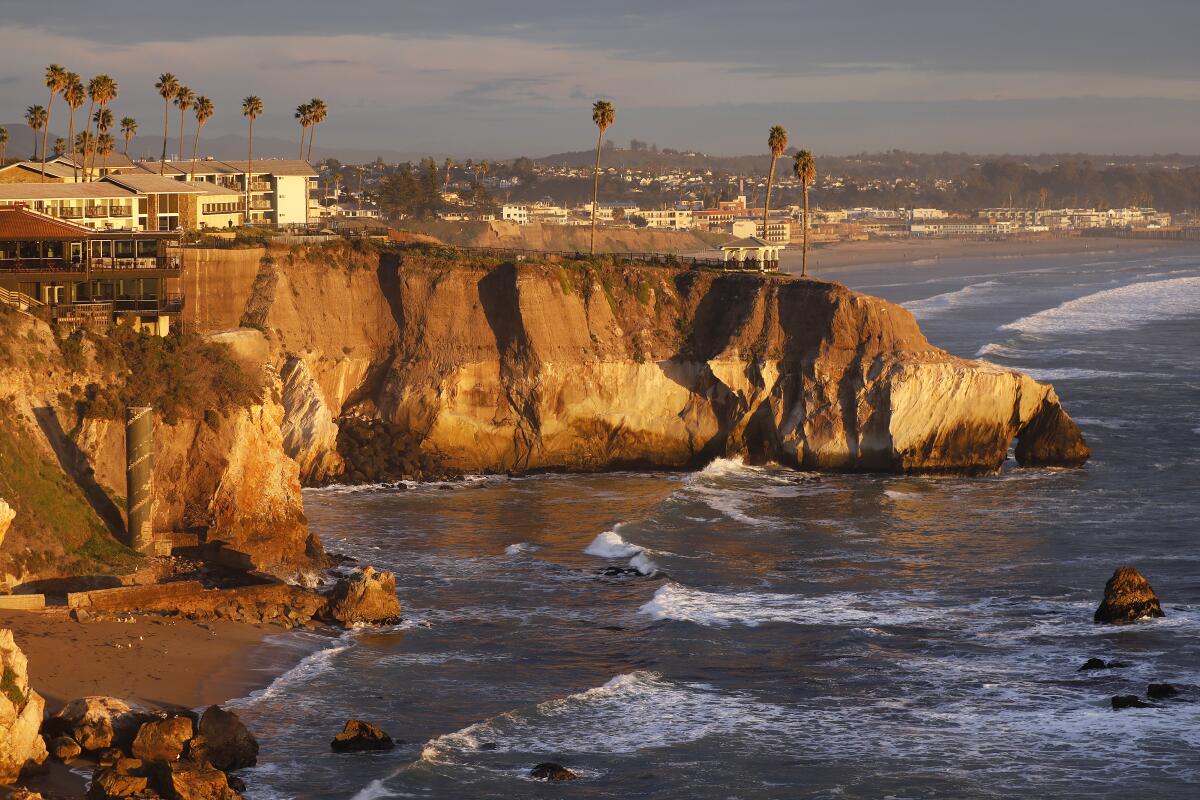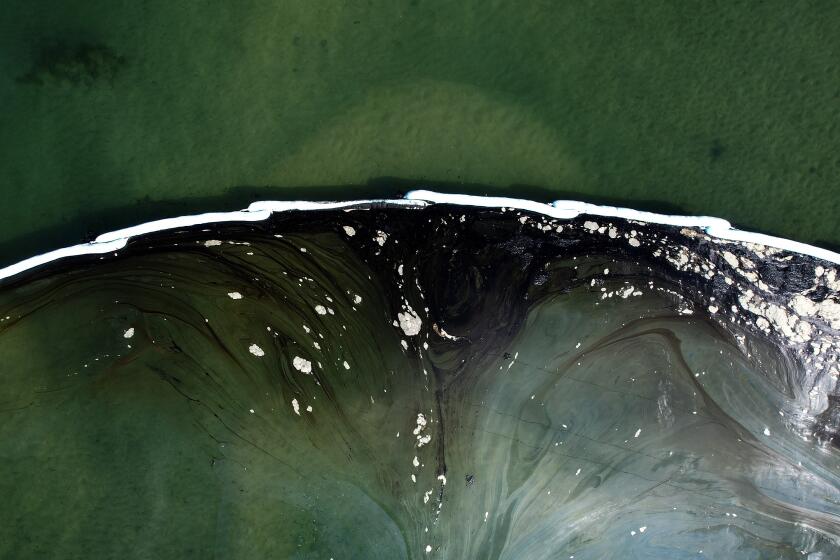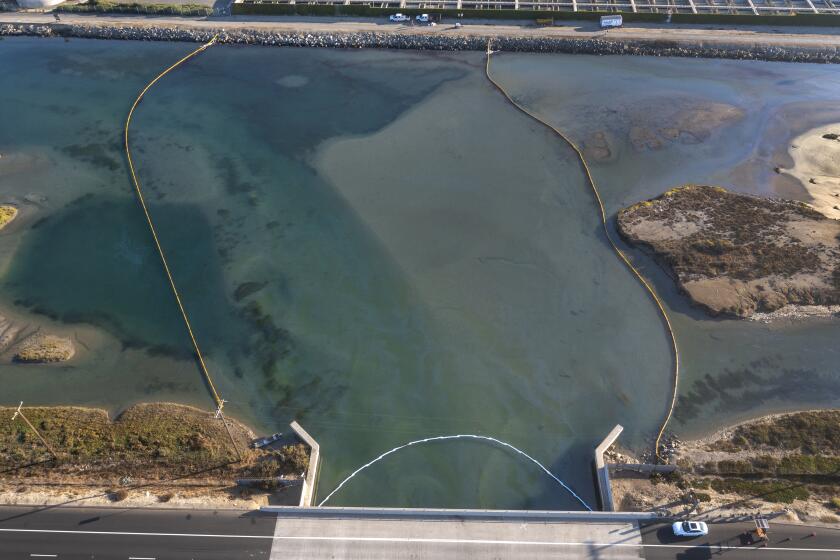Op-Ed: Create a tribal-led marine sanctuary and stop oil spills on the California coast

Although I spent most of my career in Washington, D.C., my home and heart have always been along California’s beautiful Central Coast. Growing up along the shores of Monterey Bay inspired my lifelong commitment to promoting responsible stewardship of our oceans.
California’s ocean has been integral to its culture and people since long before statehood. Coastal and inland Native American tribes depended on and cared for the ocean for thousands of years. Our coast continues to give, providing food, jobs and recreation — all important to California’s economy.
Oil industry and government officials will tout technology’s potential to mitigate the damage on thousands of gallons of oil leaked into the ocean. They know better.
Unfortunately, the health of the ocean itself has too often been taken for granted; we wrongly assume its bounty and capacity to absorb waste are limitless. And the recent oil spill off Huntington Beach is an alarm we cannot ignore — the health of our coast and the wildlife, people and economies that depend on it cannot continue to absorb these avoidable catastrophes.
Twenty years ago, I helped lead the Pew Oceans Commission, a nonpartisan effort that advanced science-based recommendations that congressional leadership from both sides of the aisle and Democratic and Republican administrations have since made meaningful progress to carry out. That progress, however, is threatened by the rapidly escalating effects of climate change, including rising ocean temperatures and sea levels, increased incidents of disease, and ocean acidification.
When I was in Congress, I worked with a bipartisan coalition to establish the Monterey Bay National Marine Sanctuary, permanently protecting the area from future offshore oil and gas development. For nearly three decades the Monterey Bay sanctuary has provided immense benefits to the communities along, and the ocean life within, its waters. Today, I believe the time is right to create a new sanctuary in California, this time in partnership with tribal communities.
The path to creating the Monterey Bay sanctuary was far from smooth. It took years of community protests and intense congressional intervention to prevent Presidents Ronald Reagan and George H.W. Bush from opening the California coast to oil development. After the Exxon Valdez oil tanker dumped nearly 11 million gallons of crude oil into Alaska’s Prince William Sound in 1989, President Bush finally announced his support for creating the Monterey Bay National Marine Sanctuary.
It was with a sense of deja vu that I watched the Trump administration issue an oil and gas leasing plan that proposed opening 90% of federal waters nationwide for 47 new lease sales, including six off California. Despite federal and state efforts to protect California’s treasured coastline, the threat of new oil drilling remains all too real. As the oil-covered beaches of Orange County have shown yet again, the consequences for ocean life and coastal communities are disastrous and expensive, and will be long lasting.
California’s distaste for offshore drilling dates back to the 1969 Santa Barbara oil spill. Here’s a recap of how the state has led the charge against the practice ever since.
Along California’s central coastline, from Santa Barbara to Cambria, there is a prime opportunity to act right now. Led by former Northern Chumash Tribal Council Chair Fred Collins, community members in San Luis Obispo and Santa Barbara counties have fought their own multiyear campaign to create a sanctuary. Sadly, Collins died on Oct. 1 before his dream could be realized. But his dream does not die with him, and the proposed Chumash Heritage National Marine Sanctuary deserves President Biden’s support and prompt action.
The Chumash Heritage sanctuary would protect an area, long targeted for offshore oil and gas development, that contains Chumash cultural and sacred sites as well as sensitive ocean habitats. Sanctuary designation would advance ecosystem-based planning to protect fisheries, seabirds, marine mammals, estuaries and beaches and promote appropriately sited offshore wind energy.
Consider the alternative: A significant oil spill in this area would threaten a major portion of California’s shoreline, putting at risk nearly half the state’s coastal waters and beaches.
Designation of the Chumash Heritage sanctuary would be historic as a major federally protected ocean area led by Indigenous people and an apt complement to Biden’s recently restored protections for Bears Ears and Grand Staircase-Escalante National Monuments, all supporting his commitment to protect 30% of U.S. lands and oceans by 2030.
We owe it to the careful stewards of both the past and future generations to protect our coast. It is time to approve the Chumash Heritage sanctuary, transition to clean energy and do all we can to ensure the latest California oil spill is our last.
Leon E. Panetta founded the Panetta Institute at Cal State Monterey Bay. He served as U.S. secretary of Defense, director of the CIA, White House chief of staff, director of the Office of Management and Budget, and as a member of Congress from California’s Central Coast for 16 years.
More to Read
A cure for the common opinion
Get thought-provoking perspectives with our weekly newsletter.
You may occasionally receive promotional content from the Los Angeles Times.












